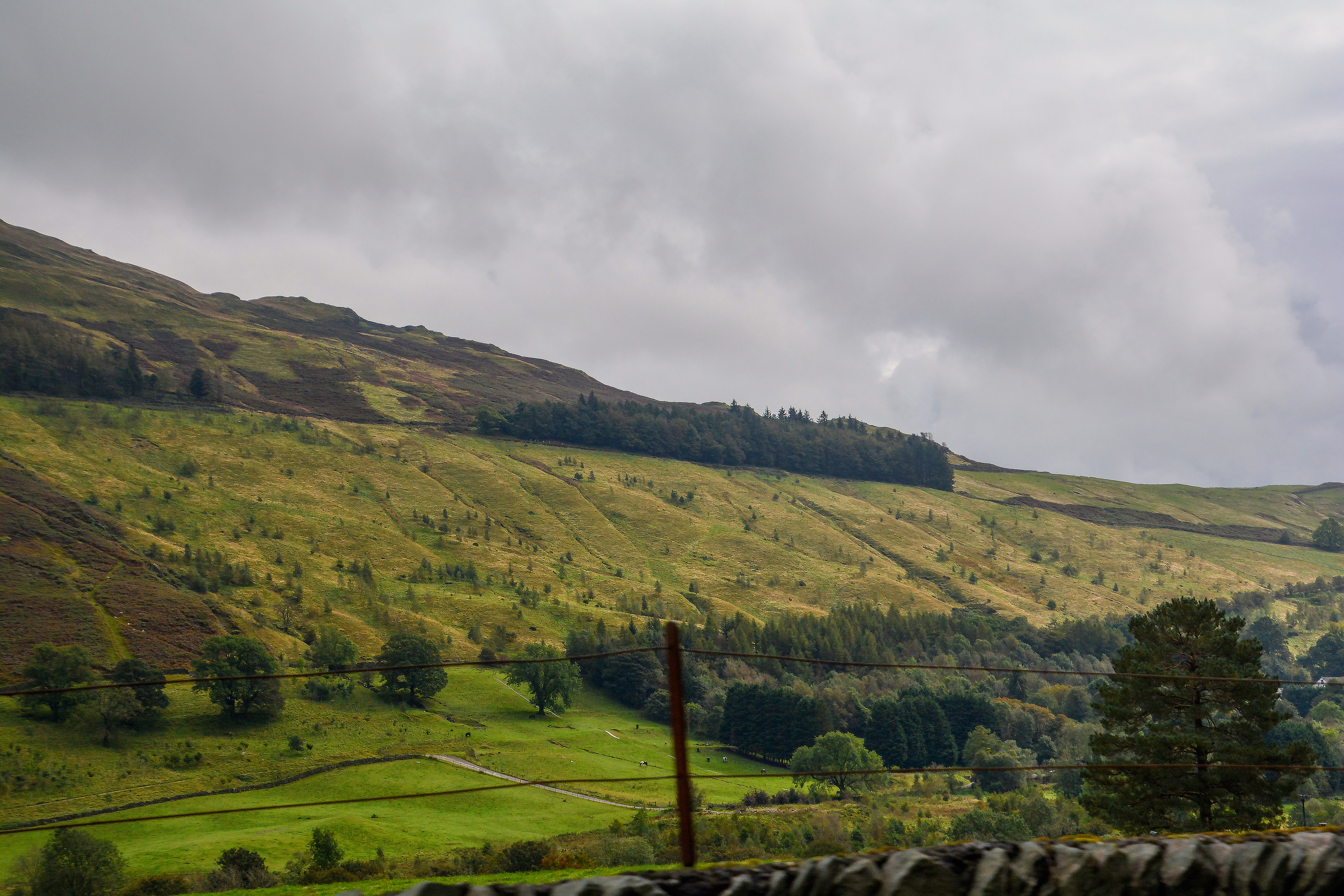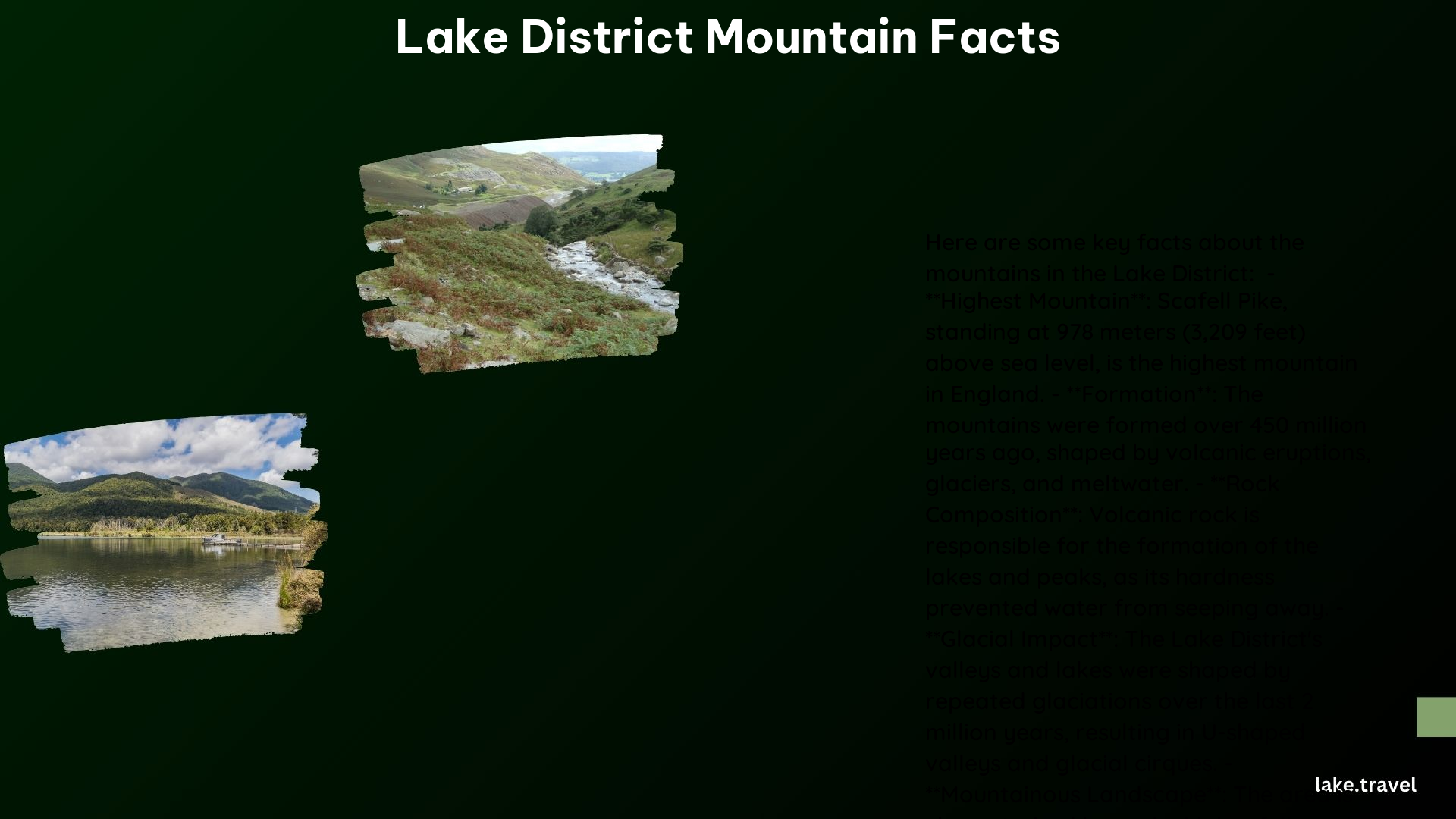The Lake District is a mountainous region and national park in Cumbria, North West England, known for its stunning natural beauty and outdoor activities. This blog post will explore the fascinating facts about the mountains in the Lake District, providing valuable information for Lakes Touring Enthusiasts.
The Highest Mountain: Scafell Pike

Scafell Pike is the highest mountain in England, standing at an impressive 978 meters (3,209 feet) above sea level. This iconic peak is a popular destination for hikers and climbers, offering breathtaking views of the surrounding fells and valleys.
The Ten Highest Peaks

The Lake District is home to the ten highest mountains in England, including:
- Scafell Pike (978 meters)
- Scafell (964 meters)
- Helvellyn (950 meters)
- Skiddaw (931 meters)
- Great End (910 meters)
- Bowfell (902 meters)
- Pillar (892 meters)
- Catstycam (889 meters)
- Crinkle Crags (859 meters)
- Esk Pike (885 meters)
This concentration of high peaks makes the Lake District a true mountaineering paradise, attracting outdoor enthusiasts from around the world.
The Glacial Landscape
The Lake District’s mountainous landscape is the result of repeated glaciations over the last 2 million years. The valleys in the region display a distinctive U-shaped cross-section, formed by the erosive power of glaciers. These valleys often contain long, narrow lakes known as tarns, which occupy glacial cirques at higher elevations.
Vegetation and Wildlife
The higher fells of the Lake District are predominantly rocky, while moorland vegetation, including bracken and heather, predominates at lower elevations. Deciduous native woodland can be found on the steeper slopes, providing a diverse habitat for a range of wildlife.
The Lake District is a major sanctuary for the red squirrel, which has the largest population in England. Conservation efforts are also in place to protect other species, such as the golden eagle, osprey, and red kite.
Climbing and Walking Routes
The Lake District offers a wealth of opportunities for outdoor enthusiasts, with numerous walking and climbing routes to explore. Some of the most famous include the Helvellyn scramble and the Fairfield group of fells, which offer stunning views of Lake Windermere and the surrounding mountains.
Panoramic Views
The highest mountains in the Lake District provide far-reaching views on clear days, allowing visitors to see the Galloway Hills of Scotland, the Mourne Mountains in Northern Ireland, the Isle of Man, and even Snowdonia in Wales. These panoramic vistas are a true highlight for anyone visiting the region.
Conservation Efforts
The Lake District is not only a stunning natural landscape but also a major conservation area. The region is home to a diverse range of flora and fauna, and efforts are in place to protect the delicate ecosystems that thrive in this mountainous environment.
Conclusion
The Lake District’s mountains are a true natural wonder, offering a wealth of opportunities for outdoor enthusiasts and nature lovers. From the majestic Scafell Pike to the stunning glacial landscapes, the region’s mountains are a testament to the power and beauty of the natural world. Whether you’re a seasoned hiker, a budding climber, or simply someone who appreciates the great outdoors, the Lake District’s mountains are sure to captivate and inspire.
References:
– https://en.wikipedia.org/wiki/Lake_District
– https://www.lakelandhideaways.co.uk/guides/lake-district-mountains-to-climb
– https://www.annshill.co.uk/10-facts-about-the-lake-district/
– https://funworldfacts.com/lake-district-england/
